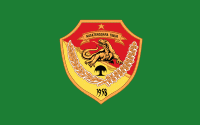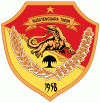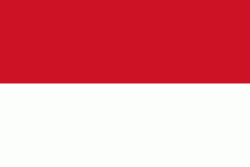East Nusa Tenggara (East Nusa Tenggara)
 |
 |
A Christian-majority region, East Nusa Tenggara is the only Indonesian province where Roman Catholicism is the predominant religion. The province has a total area of 47,931.54 km2 and a population of 5,325,566 at the 2020 Census; the official estimate as at mid 2021 was 5,387,738. Economically, East Nusa Tenggara still remains one of the least developed provinces in Indonesia. It currently focuses on expanding the tourism sector, with the most well-known attractions including Labuan Bajo, Komodo National Park, and Mount Kelimutu.
After the declaration of Indonesian independence in 1945, the eastern part of Indonesia declared the State of East Indonesia. The state was further included in the United States of Indonesia as part of the agreement with the Dutch contained in the transfer of its sovereignty to Indonesia in 1949.
In 1950, United States of Indonesia dissolved itself into a unitary state and began to divide its component area into provinces. In 1958, by Indonesian law (Undang-Undang) No. 64/1958, three provinces were established in the Lesser Sunda Islands, namely Bali, West Nusa Tenggara and East Nusa Tenggara. The area of East Nusa Tenggara province included the western part of Timor island, Flores, Sumba and other several small islands in the region. The province was originally sub-divided into twelve regencies, but on 11 April 1996, the City of Kupang, was removed from Kupang Regency and given regency-level status.
Following the fall of the Suharto regime in 1998 and the passage of a new regional autonomy law, there was a dramatic proliferation (known as pemekaran) of regional governments across Indonesia (at both provincial and regency level). Since 1998, nine new regencies were created in East Nusa Tenggara by the division of existing regencies:
* On 4 October 1999, a new Lembata Regency was formed after the division of the East Flores Regency.
* On 10 April 2002, Rote Island and adjacent islands were split off from Kupang Regency, to form a new Rote Ndao Regency.
* On 25 February 2003, Manggarai Regency was split into two and a new West Manggarai Regency was established.
* On 2 January 2007, the administration of East Nusa Tenggara province was expanded by the establishment of three new regencies – Central Sumba and Southwest Sumba (both cut out of West Sumba Regency), and Nagekeo (cut out of Ngada Regency).
* On 17 July 2007 a new regency of East Manggarai was cut out of Manggarai Regency.
Map - East Nusa Tenggara (East Nusa Tenggara)
Map
Country - Indonesia
 |
 |
| Flag of Indonesia | |
As the world's third largest democracy, Indonesia is a presidential republic with an elected legislature. It has 38 provinces, of which nine have special status. The country's capital, Jakarta, is the world's second-most populous urban area. Indonesia shares land borders with Papua New Guinea, East Timor, and the eastern part of Malaysia, as well as maritime borders with Singapore, Vietnam, Thailand, the Philippines, Australia, Palau, and India. Despite its large population and densely populated regions, Indonesia has vast areas of wilderness that support one of the world's highest level of biodiversity.
Currency / Language
| ISO | Currency | Symbol | Significant figures |
|---|---|---|---|
| IDR | Indonesian rupiah | Rp | 2 |
| ISO | Language |
|---|---|
| NL | Dutch language |
| EN | English language |
| ID | Indonesian language |
| JV | Javanese language |





















